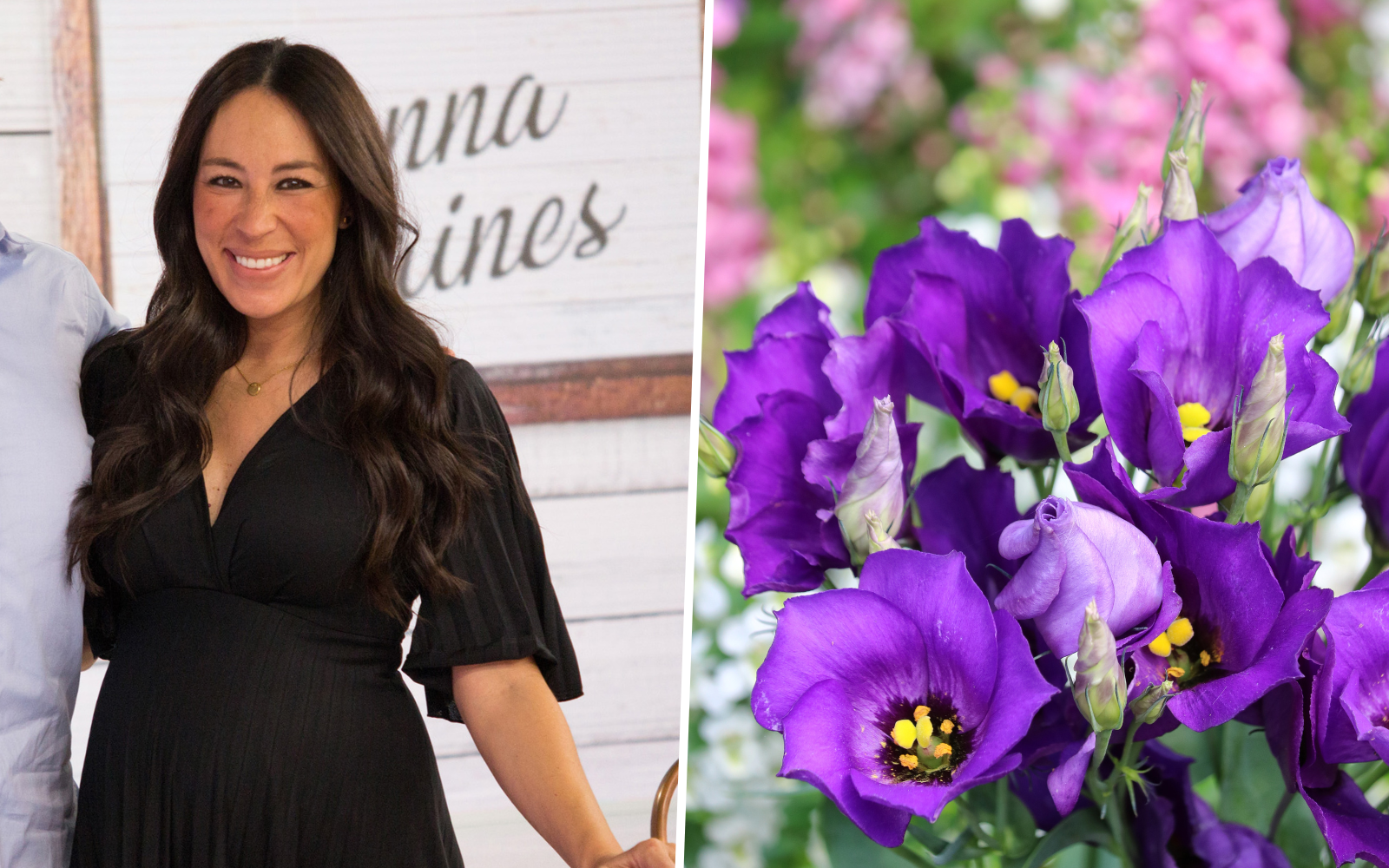
Joanna Gaines has already established herself as one of the world's best interior designers – but recent posts suggest she's equally talented in green-thumbed ventures – starting with her own backyard.
The Magnolia co-founder shared a look inside her vibrant garden on her Waco estate, complete with abundant hyacinth, towering dahlia, and lisianthus – among other colorful flowers that perfectly harmonize with one another.
Joanna is joined by her 'favorite gardener,' her four-year-old son, Crew Gaines – who is seen exploring the cottage garden – before comparing his height to the dahlias. 'Let me see how tall you are compared to the Dahlia. Look at that. This is the tallest it's ever been,' Joanna comments before moving to the lisianthus – arguably the trickiest flowers to maintain due to their size.
'These are lisianthus. They are really interesting. We have to actually contain them because they're heavy, and they like to fall,' she says.
How to care for Gaines-inspired lisianthus
Typically, a commercially cut flower, lisianthus, can be hard to grow from seed. So, we recommend investing in pre-grown flowers, like those from Burpee below.
And as Joanna mentions, lisianthus (also known as prairie gentian or eustoma) can be hard to maintain. Often, they can grow taller than 18 inches and boast long willowy stems that require support, much like hers before.
However, with the right care tips, we can achieve lisianthus as healthy as Joanna's – and get a head start to a summer garden as beautiful as hers.
1. Sunlight and water
According to horticultural expert Diana Cox, the first step to healthy flowers begins with knowing when to water and maintaining ample sunlight.
'Lisianthus thrives with at least 6 hours of direct sunlight each day,' Diana says. She recommends keeping the soil moist by watering when the top inch feels dry, but beware not to overwater to ensure the plant continues to grow tall and healthy.
2. Support lisianthus as it grows
'As Lisianthus plants grow tall, it's essential to provide support to prevent them from toppling over,' Diana says. This is precisely what Joanna faced in her own garden, but it's not something to be concerned about. If anything, it's a sign of healthy plants.
The expert recommends staking or caging the stems while they are still flexible and young.
3. Deadhead spent blooms
Like many plants, Diana explains it is important to deadhead withered and melted blooms – to encourage continuous flower production and keep the plants aesthetically pleasing. However, we should be careful to 'wait for the petals to naturally fall off before removing the entire stem.'
Alongside the lisianthus, Joanna's garden boasts a compilation of pink, yellow, and white yarrow. 'Yarrow has come in. I did a variety this time. Last year I did all yellow, but you can see pinks and peaches and yellows,' Joanna says. 'We've had such good rain, so everything is just happy.'







